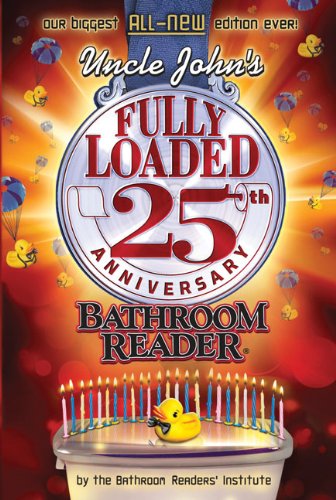Note:
Sal·ma·gun·di
[sal-muh-guhn-dee]
noun
1. a mixed dish consisting usually of cubed poultry or fish, chopped meat, anchovies, eggs, onions, oil, etc., often served as a salad.
2. any mixture or miscellany.
Origin:
1665–75; < Middle French salmingondin (later salmigondis ), compound based on salemine salted food and condir to season
1665–75; < Middle French salmingondin (later salmigondis ), compound based on salemine salted food and condir to season
This will be the first entry of a new post category I call Mental Salmagundi. Posts in this category won't be "op-eds" on current issues, but rather interesting, if trivial, observations of life in general. They'll basically be odd little thoughts of mine, which don't fit any other category.
-
 Since I was knee high to the proverbial Junebug, I can remember there being a basket, brimming with newspapers, magazines, and books, sitting next to the toilet. Family members caught up on news, sports scores, and Blondie while they evacuated their bowels.
Since I was knee high to the proverbial Junebug, I can remember there being a basket, brimming with newspapers, magazines, and books, sitting next to the toilet. Family members caught up on news, sports scores, and Blondie while they evacuated their bowels.Accepting this habit as being a normal part of life, I never really thought about it. Never, that is, until my friend and assistant, Dani, told me how surprised she was to find reading material in my bathroom. According to her, neither she, nor anyone in her social circle, read in the bathroom.
I suddenly found myself perplexed. Had a seemingly normal part of life actually been a quirk unique to my miniscule corner of the world? "Surely not," I told myself, "surely the habit is wide spread." After doing a good bit of research, I was able to satisfy myself that my original assumptions of normality had been justified.
In 1987, "Uncle John" found himself doing his business with nothing to read. In order to combat what he perceived to be a problem, John produced the first Uncle John's
 Bathroom Reader, a book of trivial facts and offbeat news, specifically designed to be read on the toilet. Since then, the Ashland based publishing company has turned out 25 general volumes of the book and multiple specialty topic volumes, printing more than 11 million copies.
Bathroom Reader, a book of trivial facts and offbeat news, specifically designed to be read on the toilet. Since then, the Ashland based publishing company has turned out 25 general volumes of the book and multiple specialty topic volumes, printing more than 11 million copies.These sales numbers alone told me the habit is, in fact, a wide spread phenomenon. How far back in history does the habit go though? Did Cesar use the time to edit future edicts? Did Shakespeare pour over scripts as he sat perchance to poop? I wondered.
Fortunately, another curious fellow, Ron Shaoul studied the toilet reading habits of 500 Israeli adults from diverse populations and age groups. While he failed to link the habit to any medical benefit or risk, the study hypothesizes the habit dates back to the first printed books.
The study also found that 49% of men and 26% of women admitted to reading on the toilet, totaling 40% of the studied population. Once gender bias was removed, the study concluded, "...more educated, secular and higher socioeconomic classes practice TR (toilet reading) significantly more than less educated, conservative, orthodox and lower socioeconomic classes."
While 40% is a significant number, it's important to note the study was conducted solely in Israel, a traditionally conservative religious nation. Thus, the habit may, or may not, exist across the same set of demographics here in the U.S., a relatively liberal secular nation.
 How the habit began hundreds of years ago, how it caught on, and why some populations, but not others, adopted the habit, will probably always be mysteries. Yet, if it is true that 40% of us do read on the toilet and 22.5% of the books on the market will be e-books by 2015, I imagine we'll begin seeing waterproof e-readers, hooked sacks allowing people to hang e-readers on towel bars, and similar products catered to the bathroom readers among us.
How the habit began hundreds of years ago, how it caught on, and why some populations, but not others, adopted the habit, will probably always be mysteries. Yet, if it is true that 40% of us do read on the toilet and 22.5% of the books on the market will be e-books by 2015, I imagine we'll begin seeing waterproof e-readers, hooked sacks allowing people to hang e-readers on towel bars, and similar products catered to the bathroom readers among us.-

Certainly a familiar concept to us Brits! The walls of the "loo" is also the place to display old photos, certificates, Oscars and other awards to denote a healthy sense of self-deprecation. Cheers, James!
ReplyDeleteWe use the fridge for photos and awards, but I can totally see the "WC" serving that function. Thanks for sharing. :-)
Delete